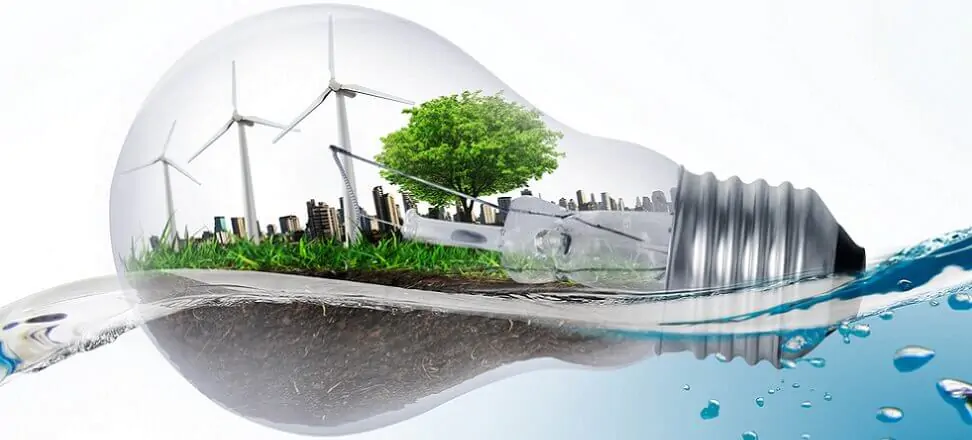Feedback, In this issue, Issue 20/2024
Water and energy: inseparable relationship versus climate change
Water and energy are in an inseparable relationship. Water is used to produce energy, and energy is needed to produce and move water. The energy sector accounts for about 10 percent of the world’s total freshwater consumption, and is dependent on energy to maintain the global supply. It is needed to extract water from lakes, rivers and oceans, to lift it from aquifers and pump it through pipes and canals, and to purify and deliver it to users.
Whether it’s water consumed and needed in households, used to produce goods, including food, or needed for energy production, two things are clear: water needs energy, and energy needs water. This is called the water-energy nexus, and it is crucial to sustaining human life on Earth.
The water we consume
Water is a staple of our daily lives. From the one we use in our homes to drink, shower or cook, to the one needed to grow crops and produce food. It’s always the same water that must be collected, purified, transported and reused in the most efficient way possible. This is where we see the close connection between water and energy. We need to purify as well as treat our water resources so that communities can consume them safely – but this process requires a lot of energy. The International Energy Agency (IEA) predicts that the energy sector will be twice as water-intensive by 2030 as it is now.
One form of water treatment is desalination. Currently, more than 2.3 billion people live in water-scarce countries. This process can provide them with clean drinking water, but it requires supplying a significant amount of energy. Some experts believe that desalination produces too many harmful emissions to be a valuable option. However, if we could power the process with clean energy sources, it could become more widely accepted.
The Middle East has one of the lowest levels of freshwater consumption per capita in the world. With population growth and easy access to seawater, desalination has become the main approach used there to address shortages. Desalinated water covers most of the daily demand in many countries in the region, including Qatar, Kuwait, Bahrain, Oman and Saudi Arabia, and new projects to increase capacity are underway.
Jordan is planning a major installation in the Gulf of Aqaba that will increase the amount of water obtained from 4 billion to 350 billion liters per year – enough to supply a city of 2.5 million people. Saudi Arabia is considering building a new city for 9 million people in the northwestern part of the country by 2045, which will depend on desalinated water from the Red Sea and the Gulf of Aqaba.
In the IEA’s projections, based on current policy settings, the growing demand for desalination will increase its share of the Middle East’s final energy consumption to 10 percent in 2030 and 15 percent in 2050, up from the current 7 percent. In 2030, the energy needed for desalination in the region is expected to be equivalent to about 80bcm of natural gas.
Water needed for energy production
Another key area where the two overlap is energy production. Hydropower is a strong and obvious example. Clean and renewable, it depends solely on water, but is the only one that does not consume it. The other ways are water-intensive. For example, a traditional power plant burns fuel – be it coal, oil or natural gas – to boil water, generate steam, and from that generate electricity. Water is also the coolant there.
Another important form of energy using water is hydrogen, especially green hydrogen, which is produced using renewable energy. It is the most abundant element in the universe. The important thing is that it doesn’t release greenhouse gases (GHGs) when burned, which is why experts believe it should be part of the energy transition. However, hydrogen production requires a large amount of treated water, which must be purified before use. It is placed in an electrolyzer, where it is separated into oxygen and hydrogen, which can then be used for heating, power and industry.
And of course, we can’t forget nuclear power. Power plants use the process of splitting atoms to generate heat, generate steam and spin turbines to produce electricity. So, if we are to consider nuclear power as part of our energy arsenal, water will be a key factor in the decision.
Climate change increases pressure on energy and water
Climate change will continue to exacerbate water stress. Changing precipitation patterns, along with more frequent droughts and floods, are challenging resource management, while rising sea levels, combined with groundwater extraction, are leading to saltwater intrusion in places where it was previously absent. Rising temperatures and drought can locally increase pressure, causing spikes in water demand. Energy infrastructure that was built for cooler, calmer climates can become unreliable or insufficiently resilient when temperatures rise and weather events become more extreme.
The increasing burden of climate change is expected to result in greater energy consumption for water supply. More desalination plants are expected to come online, and governments have begun major transportation projects to move water to where it is scarce. If desalination develops in a highly energy- and emissions-intensive way, this could lead to a vicious cycle and more emissions, and thus more extreme weather.
Most forms of energy production require water. And while solar and wind power don’t need it in the direct generation process, mining minerals and metals to produce components for green technologies already requires water. The bottom line is that water is essential to energy.
Our water and energy future
The symbiotic relationship between water and energy is critical. This is especially true as we fight the global water crisis while continuing the energy transition. At times it seems as if these two goals are in conflict – and sometimes they are. But at the end of the day, we always need water and energy, and we need to protect the planet for future generations. So ensuring reliable, affordable and sustainable access to resources is critical to the development, prosperity and stability of the societies of the future.
Policies, partnerships and cooperation are therefore key to achieving these goals. Governments can replace unnecessary energy and water subsidies with more targeted support, encouraging more efficient use of these resources and lowering associated emissions. Meanwhile, partnerships and cooperation can facilitate access to resources where they are needed most and promote conservation by reducing waste and inefficient practices.
An integrated approach to energy and water management can help reduce risk across the board. Many of the clean technologies that are being deployed to provide electricity around the world can also be used to provide access to water. For example, water pumps powered by decentralized photovoltaic cells can replace more expensive diesel pumps, and mini-grids can power filtration technologies such as reverse osmosis systems to produce clean drinking water. Switching from fossil fuels to renewable energy sources can reduce water demand in the energy sector. The mining industry will help by reducing its water demand and using more efficient treatment technologies.
Measures to conserve water and use it more efficiently also reduce energy demand. Water reuse and recycling can lower treatment requirements and reduce the associated energy demand. Energy and water management should go hand in hand.
We need to work together if we want to solve some of the biggest challenges in the water-energy nexus. To succeed, the water and energy industries must work in tandem, because what affects one directly shapes the other. Our future depends on the decisions and actions we make today.
Maja Czarzasty-Zybert, PhD – a graduate of the Faculty of Law and Administration at the University of Warsaw. Her adventure with energy law began in the Legal Office of the Energy Regulatory Office, where she was involved in, among other things, representing the President of the Energy Regulatory Office before courts, providing interested parties with answers resolving doubts about the application of energy law, conducting administrative proceedings on the granting of licenses. Subsequently, in the course of her professional practice to date, both in Polish and international law firms and as an in-house counsel, she has been involved in advising entities in the energy sector.

 Polski
Polski







